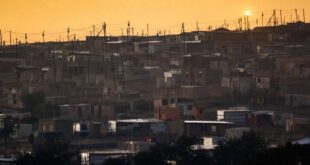Mill End is an interesting part of Three Rivers, on the outskirts of Rickmansworth and often passed though on the way to the M25: but it has a story of its own, and readers and local people will remember some of it.
Why it was called Mill End isn’t clear, but it was certainly so before the end of the 15th century, probably before there was a mill – a local man bequeathed two houses there in 1497, and in 1588 the inhabitants tried to get an unruly ale house shut down. Nonetheless, there was a water mill there by the middle of the 18th century, which by 1755 had become one of the several paper mills in the area – it made ‘fine paper’ by hand, although by 1835 it was probably using water-powered machinery and was drying the paper by coal-produced steam (the chimney appears in a few local photographs). It closed and was demolished in about 1910.

Aside from the usual array of shops and small businesses in a village like Mill End, there were two small industrial sites in the 19th century, both owned by the Wild family – a tannery and a brewery. The brewery was taken over and closed by Sedgwicks in 1900, to become home to the mineral water business which soon moved to Springwell, and then the Royal Herts Laundry. The tannery passed to W & A Galley before World War One, as a leather factory making boots and leggings, partly for the Army. Horwoods were builders and coal merchants but also hired steam-driven road rollers. Tornado sports cars were built on what’s now the Fairway Tyres premises. The Rickmansworth and Uxbridge Valley Water Company pumping station was built in 1888 and demolished in 1966. And we’ve featured previously the Crown Offices at the Moneyhill end, and the watercress beds so widespread across this area.

There were large houses in and near Mill End. One was Moneyhill House, another Colne Bridge House, another Riverside. The Cedars became Dalrymple House and a ‘Home for Inebriates’ in 1883, a much-needed service in the days around 1900 when so much less was known about alcoholism. So it’s perhaps ironic that, in addition to the brewery, there were a number of pubs in this small area: the Red Lion, Spotted Dog and Plough all lost their licences in 1912, but the Halfway House and the Whip and Collar (much changed) are still there, while the Vine was demolished in 1989 and the Tree (actually the Rose and Crown, but so called because of the tree growing on the forecourt and more recently closed) still stands on the opposite side of Church Lane. And up Berry Lane stood the Happy Man, whose sign we still have in the museum.

There have, of course, been places of worship and education. The Methodist church stands in Berry Lane, and the Ebenezer Chapel was built and used by the Baptist church from 1823 to 1946, when they moved to Field Way. St Peter’s parish church was built in 1875, and provided a school from 1880 (there was also a mixed National School from 1874, interestingly close to Rickmansworth with the same but larger provision). York House school occupied Moneyhill House from 1950 before it moved to Croxley Green, and a new senior school was opened in 1936.

Despite the modest industrial establishments, the main occupation was agriculture. Until close to the end of the 19th century most of the land was for farming, and remained so until after World War Two. So Shepherds, Two Stones, Mill End and Long Lane Stockers Farms occupied the land along the Uxbridge Road between Parsonage and Woodoaks, and between them employed many of the people. Most of that was taken out by the ‘metroland’ and later development of the residential roads to the north of Uxbridge Road, but that itself has given us the rich variety that we value so much today. The story of Mill End is an important one in its own right.

Three Rivers Museum is open Wednesday, Thursday and Friday 2pm to 4pm, and Saturday 10am to 2pm. Visit www.trmt.org.uk for more information.


